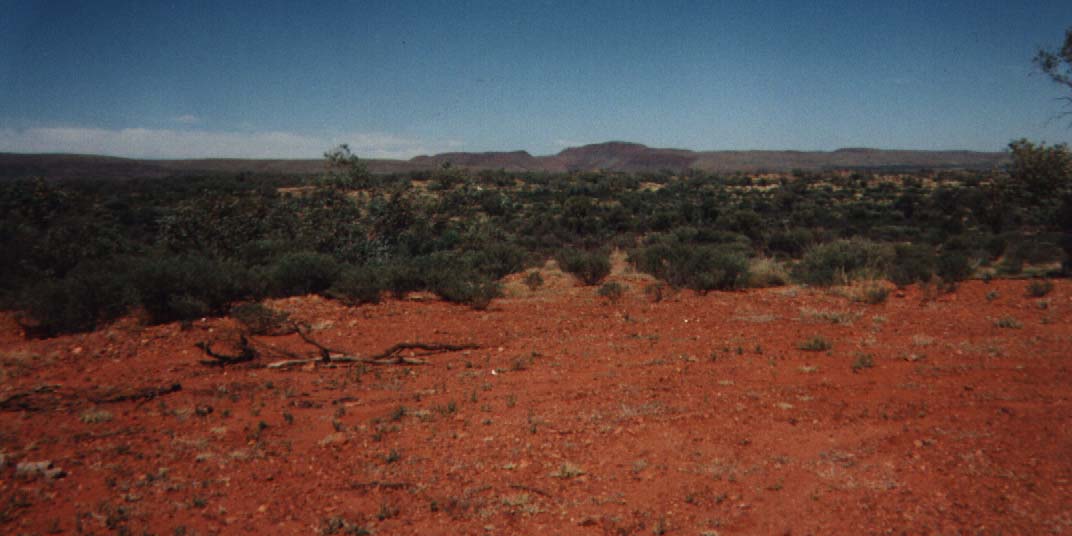
Trevor read Jim Fitzpatrick's book "The Bicycle in the Bush" on the early days of cycling in Australia and how there was great interest by the public in long distance rides in the 1890s, soon after the introduction of the modern diamond frame bicycle. He decided to commemorate the Centenary of the great rides of those days, starting in 1992 with a ride from the Gulf of Carpentaria to Sydney, then across the Nullarbor in 1996, and from Adelaide to Darwin in 1997.
In my case it was a little bit of "because its there" and " wonder if I could do that" as well as a desire to see the Red Centre and the Top End, and also because, like Murif, I wanted to get away and "do something".
Without Trevor, who planted the idea, and his ability to plan, I probably would still be wondering.
Your reasons for going may well be quite different, but the sense of achievement and the beauty of the country will live in your memory for a long while.

We left in late March, when daytime temperatures are just starting to
cool off in the south but are still very warm to hot in the north.
Nights are still mild in the south, and warm in the north, making
camping out easier. Humidity is usually low in the south but can still
be high in the tropical north, depending on the length of the tropical
Wet Season. We were lucky in that the wet season finished early and we
had dry east to southeasterly winds all the way into Darwin at the end
of April. Winds in the south were also mainly southeasterly, giving us
welcome assistance on some days. There were a few hard days when we had
cross winds or head winds. Apart from a few drops of rain on the first
day it was dry for the whole trip. North from about Tennant Creek,
temperatures reached 30 degrees Celsius by midday and about 35 during
the afternoon, so it was important to get an early start.
April or early May is probably the most suitable time to set out, with a
greater chance of it being dry and cooler in the tropics. Wintertime
(June to August) would also be suitable, with cooler days, but nights in
the centre can be very cold, requiring a good sleeping bag. Winds also
might be adverse in the south with the possibility of fresh
northwesterly winds ahead of cold fronts and some rain. In Spring
(September and October), it is warming up in the south and still dry in
the north. The only drawback might be that the country can be very dry
and dusty if there has been no winter rain, and late cold fronts could
give adverse winds in the south.
The dry season lasts from May to about November in the Tropics, with
generally southeasterly winds and fine weather. Temperatures and
humidity start rising in November and December and heavy rain is likely
in the monsoon season from late December/early January through to March
or April. You could cycle in this period in the monsoon "breaks" but you
would have to be prepared for the heat and humidity in the Tropics and
possible extreme heat and dryness in the centre. I would not recommend
it.
In general it would seem best to cycle from south to north, because
winds are more likely to be from the southeast over the majority of the
route in just about any month of the year.
Also, to see the Red Centre at its best go, if you can arrange it, after
some good rains have fallen. Grasses and shrubs grow quickly and the
country looks dramatically different.
1 Intro | 3 what to take| 4 water and road trains| 5 on the road| 6 places along the way| 7 distances and water| 8 web info| 9 Trevor Briggs|